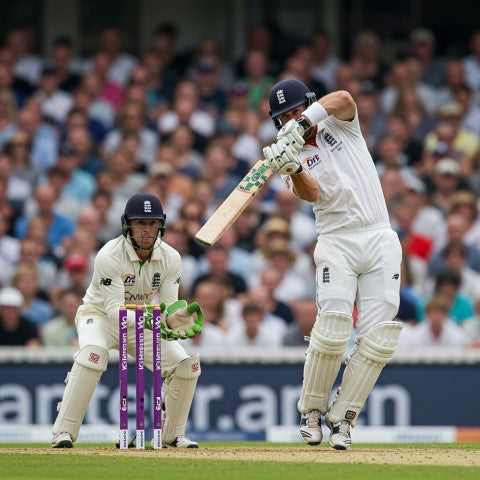What’s Inside a Professional Cricketer’s Kit Bag?

From the outside, a professional cricketer’s kit bag looks like a glorified suitcase on wheels. But unzip it, and you’ll uncover a world of preparation, precision, and the occasional superstition. These aren’t just bags — they’re mobile command centres for elite athletes who spend months living out of hotels, dressing rooms, and tour buses.
A cricketer’s gear must serve more than just its basic function. It must adapt to formats, weather conditions, playing styles, and even mental states. Some items are high-tech, some highly personal. Some are essential; others are just weirdly sentimental. And each item tells a story — of habits, routines, and a level of detail that separates the good from the great.
So, what’s actually inside a professional cricketer’s kit bag? Spoiler: it’s not just bats and whites. Let’s unzip it and find out.
1. The Bat(s): More Than One, Always
You’d be hard-pressed to find a professional cricketer carrying just one bat. Most will have at least three or four, each tailored for different conditions and situations.
Here’s why:
-
Different weights: A 2lb 9oz bat might feel perfect on a green top, while a heavier one adds punch on a flat deck.
-
Profiles: Some bats have low middles for driving on slow pitches, others have high middles for bouncier wickets.
-
Pickup and balance: Even subtle differences affect shot execution.
Players often label or mark their bats: “Match”, “Nets”, “Powerplay”, etc. Some even reserve specific bats for Test matches vs white-ball games.
And it’s not just about the blade. The handle shape (oval vs round), grip type, and toe guard all influence how the bat feels. Most pros also have custom stickers, reflecting sponsorship deals or personal flair.
Bats aren’t backup plans — they’re finely tuned tools, each suited to a specific task. And every cricketer has their favourite, even if they won’t admit it.
2. Pads and Guards: Protection with Precision
To the untrained eye, pads are pads. But to a pro, there’s a world of difference between standard gear and what they wear.
Batting Pads:
-
Lightweight yet high-density foam for mobility
-
Custom-fitted to leg length and shin shape
-
Velcro straps designed to reduce rotation when running
Thigh and Inner Thigh Guards:
-
Often sewn into compression shorts for convenience
-
Made with carbon fibre or advanced foams for minimal weight
-
Strategically shaped to avoid rubbing during long innings
Chest Guards and Arm Guards:
-
Not everyone uses them — but those who do have them custom-shaped
-
Especially common in short-format cricket or when facing express pace
Abdomen (Box):
-
Every cricketer’s most crucial bit of kit
-
Some use moulded 3D-fit guards for added comfort and protection
Many pros get their guards custom-moulded by brands like Masuri, Shrey, or Moonwalkr, ensuring comfort without sacrificing freedom of movement.
The goal? Stay protected — without feeling like you’re batting in a suit of armour.
3. Gloves: Grip, Comfort, and Rotation
No one sweats through gear faster than a batter on a hot day — which is why most pros carry 3 to 5 pairs of gloves.
Each pair is rotated every few overs during an innings to keep hands dry and grip consistent. But these aren’t identical clones — pros often carry:
-
Match gloves: with extra cushioning on the lead hand
-
Practice gloves: more worn-in, used for nets and throwdowns
-
Wet weather gloves: with extra grip in humid or damp conditions
Modern gloves feature:
-
High-density foam and plastic inserts for impact protection
-
Mesh ventilation to manage sweat
-
Split-finger or sausage-style design, depending on preference
Many players also customise their gloves with initials or club colours. And unlike in the amateur game, gloves are often replaced mid-season — not when they fall apart, but as soon as they lose feel.
Why so picky? Because a fraction of a second lost to slippage, or discomfort, can mean the difference between driving through cover or nicking to slip.
4. Helmets and Headgear: Safety First
Helmets have come a long way since the grill-less lids of the ‘70s. Today’s pros wear bespoke helmets — often designed to meet both ICC safety standards and personal comfort specs.
Key features include:
-
Titanium or steel grills: titanium is lighter, steel more durable
-
Adjustable padding: to create a snug, non-slip fit
-
Neck protectors: increasingly standard after the tragic death of Phillip Hughes
Brands like Shrey, Masuri, and Ayrtek dominate the market, offering custom fits and even 3D-scanned interiors.
Some players carry multiple helmets:
-
One for pace bowling (with a tighter grill)
-
One for spin or practice (with lighter materials)
And let’s not forget the caps and headbands — whether it’s a baggy green, a sunhat, or a superstition-laced sweatband, what cricketers wear on their heads is as much about identity as safety.
5. Spikes and Trainers: Footwear for Every Format
While the bat might be a cricketer’s most glamorous tool, footwear is the foundation of performance. Every step — whether it’s a fast bowler’s run-up or a batter’s quick single — depends on grip, comfort, and shock absorption.
Professional cricketers usually carry:
-
Batting spikes: lighter, designed for stability and balance
-
Bowling spikes: reinforced soles and added heel support for impact
-
Indoor trainers: used during nets or warm-ups
-
Recovery flip-flops or slides: for between innings or travel
The spikes themselves are often interchangeable — with rubber studs for dry, firm surfaces and metal for grass-heavy or damp outfields. Many players opt for custom orthotics to reduce pressure on joints and avoid injuries, especially in formats like T20 with short bursts of high intensity.
Brands matter too — some prefer Adidas or New Balance for their fit, others swear by Asics or Puma. But whatever the logo, the golden rule remains: you’re only as fast, stable, or pain-free as your shoes allow.
Footwear isn’t just gear. It’s injury prevention, confidence in the field, and the base of every match-winning performance.
6. Clothing and Layering: More Than Just Whites
A professional cricketer’s wardrobe isn’t limited to creams or coloured jerseys. Their kit bag usually contains a full layer strategy, especially for tour conditions.
Inside, you’ll often find:
-
Match whites or team kits: often multiple sets, labelled per day
-
Training gear: shorts, vests, sweat-wicking tops
-
Compression wear: helps with muscle support and recovery
-
Thermal layers: for early-season UK Tests or day-night matches
-
Rain jackets and waterproof trousers: essential in England or during monsoons
-
Sun sleeves or UV-protective tops: vital on hot subcontinental tours
Some players pack personal touches — a favourite pair of lucky socks, a specific undershirt, or even heat-activated hand warmers.
Match clothing is tailored for breathability and movement. Shirts often have mesh zones at high-sweat areas, while trousers are made to stretch during slides and dives.
And let’s not forget team-issued kits with sponsor logos, initials, and player numbers — a reminder that even in cricket, you wear your job on your sleeve.
7. Recovery Tools and Essentials
A professional’s kit bag doesn’t just help them perform — it helps them recover. The physical toll of modern cricket requires serious maintenance, and players come prepared.
You’ll usually find:
-
Foam rollers: to ease out tight muscles post-match
-
Resistance bands: for pre-game mobility and warm-up drills
-
Massage balls: to work on specific knots or tight areas
-
Ice packs or cooling sleeves: especially after long bowling spells
-
Electrolyte tablets or hydration powders: to stay balanced during long innings
-
Strapping tape, scissors, and kinesiology tape: for quick fixes and ongoing niggles
Some also carry heart rate monitors, GPS trackers, or fitness watches — especially in franchise leagues where fitness is tracked across matches.
These tools are no longer just for physios. Players are now expected to take charge of their own recovery. A properly stocked kit bag reflects a player who’s in tune with their body — and the demands of the modern game.
8. The Extras: From Lucky Charms to Snacks
Beyond the bats, gloves, and recovery tools lies the human side of every cricketer’s kit — the random, quirky, or downright unexplainable contents that make each bag unique.
Common extras include:
-
Energy bars or protein shakes: for quick between-session boosts
-
Chewing gum or mints: a focus aid (or just habit)
-
Notebooks or journals: for recording match thoughts, goals, or opposition analysis
-
Prayer beads, lucky coins, or photos: each with its own story
-
Phone chargers, AirPods, sunglasses, and books: to pass time between sessions
-
Tape rolls, hair ties, cologne, and even deodorant: yes, appearances matter too
Some players bring extra grips, a miniature bat for autographs, or even a travel espresso machine (we’re looking at you, Virat).
These aren’t distractions. They’re rituals, comforts, and part of the rhythm that helps elite athletes switch on when the moment demands.
Because in cricket, confidence starts long before you walk out to bat. Sometimes, it starts with a perfectly packed kit bag.
Conclusion: Why the Kit Bag Tells You Everything About a Cricketer
A professional cricketer’s kit bag is more than just a container for equipment — it’s a personal ecosystem of performance, ritual, and resilience.
From multiple bats tailored for different pitches, to custom gloves, recovery gear, and even superstition-laced trinkets, every item serves a purpose. It’s a physical reflection of the demands of modern cricket — and the meticulous preparation that goes into every match.
Understanding what’s inside the kit bag reveals just how much goes into every ball faced or bowled. It’s a reminder that elite cricket is part physical, part mental, and wholly dependent on preparation.
So the next time you see a player wheel their massive kit bag into the dressing room, remember: you’re not just looking at gear. You’re looking at years of habit, hours of thinking, and a career’s worth of investment in performance.





Leave a comment